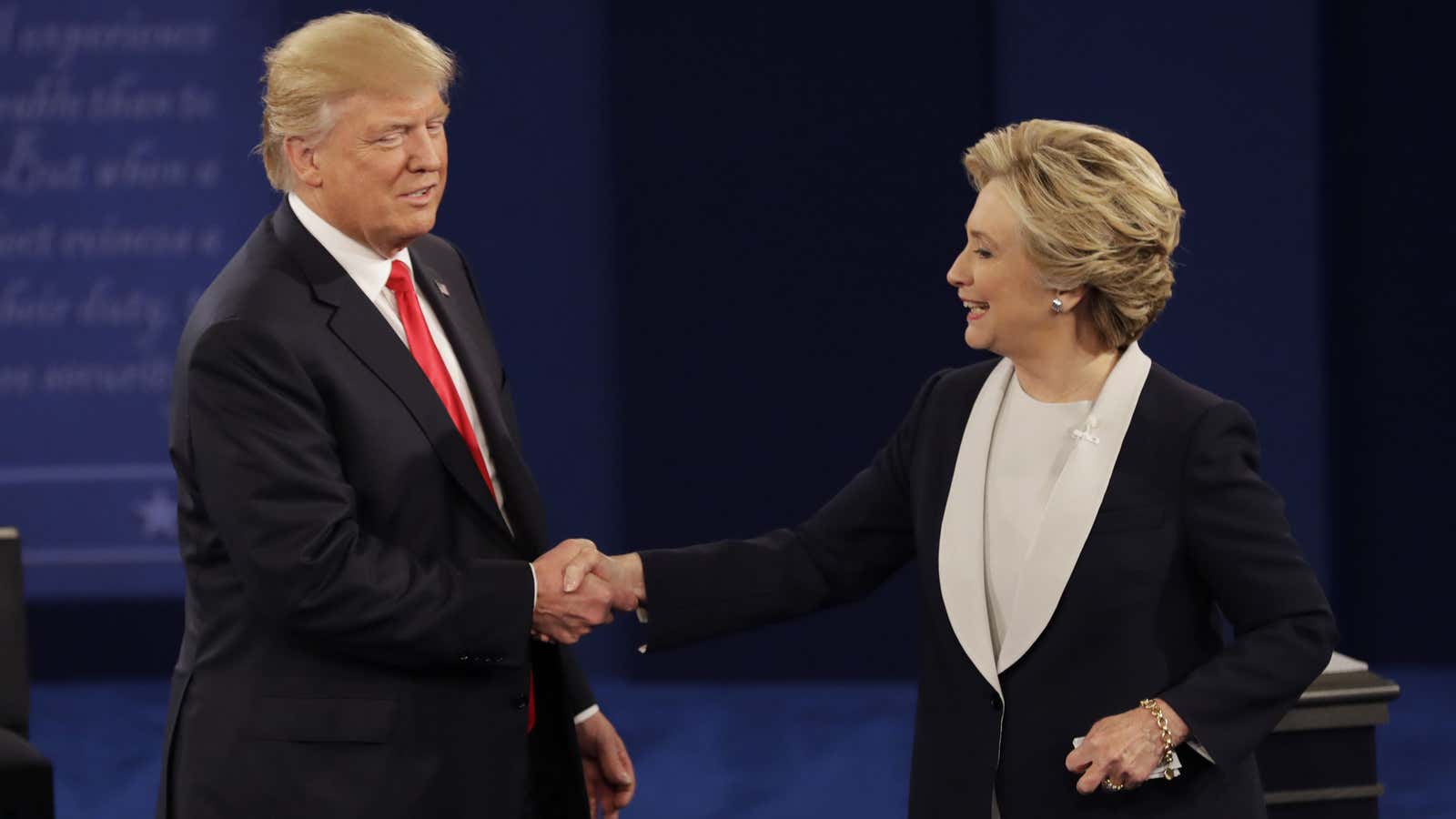One of the only things Hillary Clinton and Donald Trump agreed on during the second presidential debate was the need to eliminate the carried interest tax loophole.
Carried interest is the portion of their clients’ profit paid to managers of private equity, venture capital, real estate, and other funds in return for managing those funds. The payments are the managers’ compensation, for which the top tax rate would otherwise be 39.6%. But because of the loophole, carried interest is instead taxed at the capital gains rate, which tops off at 23.8%.
“Rarely has a policy existed so long with such weak arguments in its favor,” former US Treasury secretary Larry Summers has said of the loophole.
And some beneficiaries have themselves called for its repeal. ”The capital gains tax benefit was originally created for people who invested with their own capital at risk,” argued venture capitalist Alan Patricof. “But because of the nature of our work, carried interest does not merit that incentive.”
The carried interest loophole has greatly benefited the ultra-rich, including wealthy hedge fund managers. But it is only exploited by an estimated 60,000 US households and its reform would generate just $20 billion in additional federal tax revenue over the next decade, according to one estimate.
Some, including Michael Hiltzik of the Los Angeles Times, argue that the capital gains tax itself is a much more significant tax loophole for the wealthy. “So keep this in mind the next time wealthy taxpayers ask to be patted on the head for advocating an end to the carried interest loophole: The real tax break is the one they’re not talking about,” writes Hiltzik.




